A Novel Approach to Edge Detection for a Gravity Anomaly Based on Fractal Surface Variance Statistics of Fractal Geometry
Abstract
:1. Introduction
2. Method
2.1. Mathematical Method
2.1.1. Fractal Surface Variance Statistics Method
2.1.2. Conventional Method of the Directional Gradient Filter and the Second Order Derivate Filters of Laplacian 1 and 2
2.2. Calculation Steps of the Fractal Dimension
2.3. Model Test
2.3.1. Analysis of the Theoretical Model
2.3.2. Comparison with the Conventional Methods of Edge Detection
3. Results and Discussion
3.1. Geological Conditions of the Study Area
3.2. Magnetic and Gravity Anomalies of the Study Area
3.3. Analysis for Application in the Luobusha Chromite Deposit
4. Conclusions
Author Contributions
Funding
Institutional Review Board Statement
Informed Consent Statement
Data Availability Statement
Acknowledgments
Conflicts of Interest
References
- Volland, S.; Kruhl, J.H. Anisotropy quantification: The application of fractal geometry methods on tectonic fracture patterns of a Hercynian fault zone in NW Sardinia. J. Struct. Geol. 2004, 26, 1499–1510. [Google Scholar]
- Kemblowski, M.W.; Wen, J.C. Contaminant spreading in stratified soils with fractal permeability distribution. Water Resour. Res. 1993, 29, 419–425. [Google Scholar]
- Kruhl, J.H. Fractal-geometry techniques in the quantification of complex rock structures: A special view on scaling regimes, inhomogeneity and anisotropy. J. Struct. Geol. 2013, 46, 2–21. [Google Scholar]
- Molz, F.J.; Boman, G.K.; Greald, K.B. A Fractal-Based Stochastic Interpolation Scheme in Subsurface Hydrology. Water Resour. Res. 1993, 29, 3769–3774. [Google Scholar]
- Puente, C.E.; Robayo, O.; Sivakumar, B. A fractal-multifractal approach to groundwater contamination. 2. Predicting conservative tracers at the Borden site. Stoch. Environ. Res. Risk Assess. 2001, 15, 372–383. [Google Scholar]
- Zhokh, A.; Trypolskyi, A.; Strizhak, P. Relationship between the anomalous diffusion and the fractal dimension of the environment. Chem. Phys. 2018, 503, 71–76. [Google Scholar]
- Cello, G. Fractal analysis of a Quaternary fault array in the central Apennines, Italy. J. Struct. Geol. 1997, 19, 945–953. [Google Scholar]
- Balka, R.; Buczolich, Z.; Elekes, M. A new fractal dimension: The topological Hausdorff dimension. Adv. Math. 2015, 274, 881–927. [Google Scholar]
- Ai, T.; Zhang, R.; Zhou, H.W.; Pei, J.L. Box-counting methods to directly estimate the fractal dimension of a rock surface. Appl. Surf. Sci. 2014, 314, 610–621. [Google Scholar]
- Rosenberg, E. Maximal entropy coverings and the information dimension of a complex network. Phys. Lett. A 2017, 381, 574–580. [Google Scholar]
- Dlask, M.; Kukal, J. Application of rotational spectrum for correlation dimension estimation. Chaos Solitons Fractals 2017, 99, 256–262. [Google Scholar]
- Gallos, L.K.; Song, C.; Makse, H.A. A review of fractality and self-similarity in complex networks. Phys. A Stat. Mech. Its Appl. 2007, 386, 686–691. [Google Scholar]
- Carr, J.R. Statistical self-affinity, fractal dimension, and geologic interpretation. Eng. Geol. 1997, 48, 269–282. [Google Scholar]
- Lopes, R.; Betrouni, N. Fractal and multifractal analysis: A review. Med. Image Anal. 2009, 13, 634–649. [Google Scholar]
- Zuo, B.; Hu, X. Edge detection of gravity field using eigenvalue analysis of gravity gradient tensor. J. Appl. Geophys. 2015, 114, 263–270. [Google Scholar]
- Chen, G.; Cheng, Q. Singularity analysis based on wavelet transform of fractal measures for identifying geochemical anomaly in mineral exploration. Comput. Geosci. 2016, 87, 56–66. [Google Scholar]
- Agterberg, F.P. Multifractals and geostatistics. J. Geochem. Explor. 2012, 122, 113–122. [Google Scholar]
- Afzal, P.; Ahmadi, K.; Rahbar, K. Application of fractal-wavelet analysis for separation of geochemical anomalies. J. Afr. Earth Sci. 2017, 128, 27–36. [Google Scholar]
- Yuan, F.; Li, X.; Zhou, T.; Deng, Y.; Zhang, D.; Xu, C.; Zhang, R.; Jia, C.; Jowitt, S. Multifractal modelling-based mapping and identification of geochemical anomalies associated with Cu and Au mineralisation in the NW Junggar area of northern Xinjiang Province, China. J. Geochem. Explor. 2015, 154, 252–264. [Google Scholar]
- Chen, G.; Cheng, Q.; Zuo, R. Fractal analysis of geochemical landscapes using scaling noise model. J. Geochem. Explor. 2016, 161, 62–71. [Google Scholar]
- Subhakar, D.; Chandrasekhar, E. Reservoir characterization using multifractal detrended fluctuation analysis of geophysical well-log data. Phys. A Stat. Mech. Its Appl. 2016, 445, 57–65. [Google Scholar]
- Wang, G.; Zhang, S.; Yan, C.; Xu, G.; Ma, M.; Li, K.; Feng, Y. Application of the multifractal singular value decomposition for delineating geophysical anomalies associated with molybdenum occurrences in the Luanchuan ore field (China). J. Appl. Geophys. 2012, 86, 109–119. [Google Scholar]
- Dimri, V.P. (Ed.) Fractals in Geophysics and Seismology: An Introduction, in Fractal Behaviour of the Earth System; Springer: Berlin/Heidelberg, Germany, 2005; pp. 1–22. [Google Scholar]
- Mark, D.M.; Aronson, P.B. Scale-dependent fractal dimensions of topographic surfaces: An empirical investigation, with applications in geomorphology and computer mapping. J. Int. Assoc. Math. Geol. 1984, 16, 671–683. [Google Scholar]
- Srivastava, R.P.; Vedanti, N.; Dimri, V.P. Optimal Design of a Gravity Survey Network and its Application to Delineate the Jabera-Damoh Structure in the Vindhyan Basin, Central India. Pure Appl. Geophys. 2007, 164, 2009–2022. [Google Scholar]
- Chen, G.; Cheng, Q.; Zhang, H. Matched filtering method for separating magnetic anomaly using fractal model. Comput. Geosci. 2016, 90, 179–188. [Google Scholar]
- Chen, G.; Cheng, Q. Fractal-Based wavelet filter for separating geophysical or geochemical anomalies from background. Math. Geosci. 2018, 50, 249–272. [Google Scholar]
- Ma, G.; Li, L. Edge detection in potential fields with the normalized total horizontal derivative. Comput. Geosci. 2012, 41, 83–87. [Google Scholar]
- Hosseini, A.A.; Doulati Ardejani, F.; Tabatabaie, S.H.; Hezarkhani, A. Edge detection in gravity field of the Gheshm sedimentary basin. Int. J. Min. Geo-Eng. 2013, 47, 41–50. [Google Scholar]
- Oliveira, S.P.; Ferreira, F.J.F.; Souza, J.D. EdgeDetectPFI: An algorithm for automatic edge detection in potential field anomaly images—Application to dike-like magnetic structures. Comput. Geosci. 2017, 103, 80–91. [Google Scholar]
- Zhang, Y.; Jin, Z.; Griffin, W.L.; Wang, C.; Wu, Y. High-pressure experiments provide insights into the Mantle Transition Zone history of chromitite in Tibetan ophiolites. Earth Planet. Sci. Lett. 2017, 463, 151–158. [Google Scholar]
- Wei, S.; Pengda, Z. Theoretical study of statistical fractal model with applications to mineral resource prediction. Comput. Geosci. 2002, 28, 369–376. [Google Scholar]
- Liu, C.Z.; Wu, F.Y.; Wilde, S.A.; Yu, L.J.; Li, J.L. Anorthitic plagioclase and pargasitic amphibole in mantle peridotites from the Yungbwa ophiolite (southwestern Tibetan Plateau) formed by hydrous melt metasomatism. Lithos 2010, 114, 413–422. [Google Scholar]
- Shi, N.; Ma, Z.; Xiong, M.; Dai, M.; Bai, W.; Fang, Q.; Yan, B.; Yang, J. The crystal structure of (Fe4Cr4Ni)9C4. Sci. China Ser. D Earth Sci. 2005, 48, 338. [Google Scholar]
- Li, G.; Tian, Y.; Kohn, B.P.; Sandiford, M.; Xu, Z.; Cai, Z. Cenozoic low temperature cooling history of the Northern Tethyan Himalaya in Zedang, SE Tibet and its implications. Tectonophysics 2015, 643, 80–93. [Google Scholar]
- Nowell, D.A.G. Gravity terrain corrections—An overview. J. Appl. Geophys. 1999, 42, 117–134. [Google Scholar]
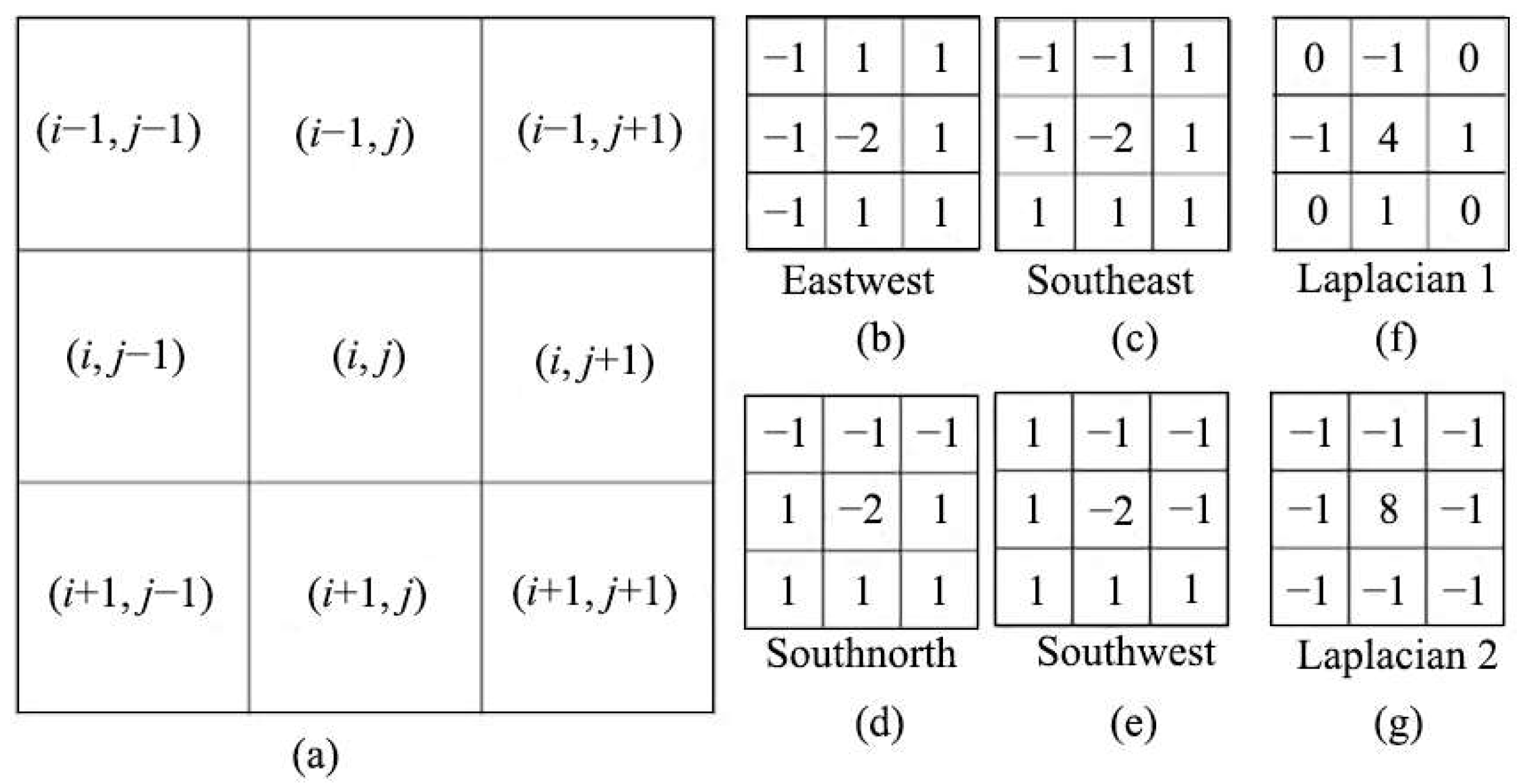
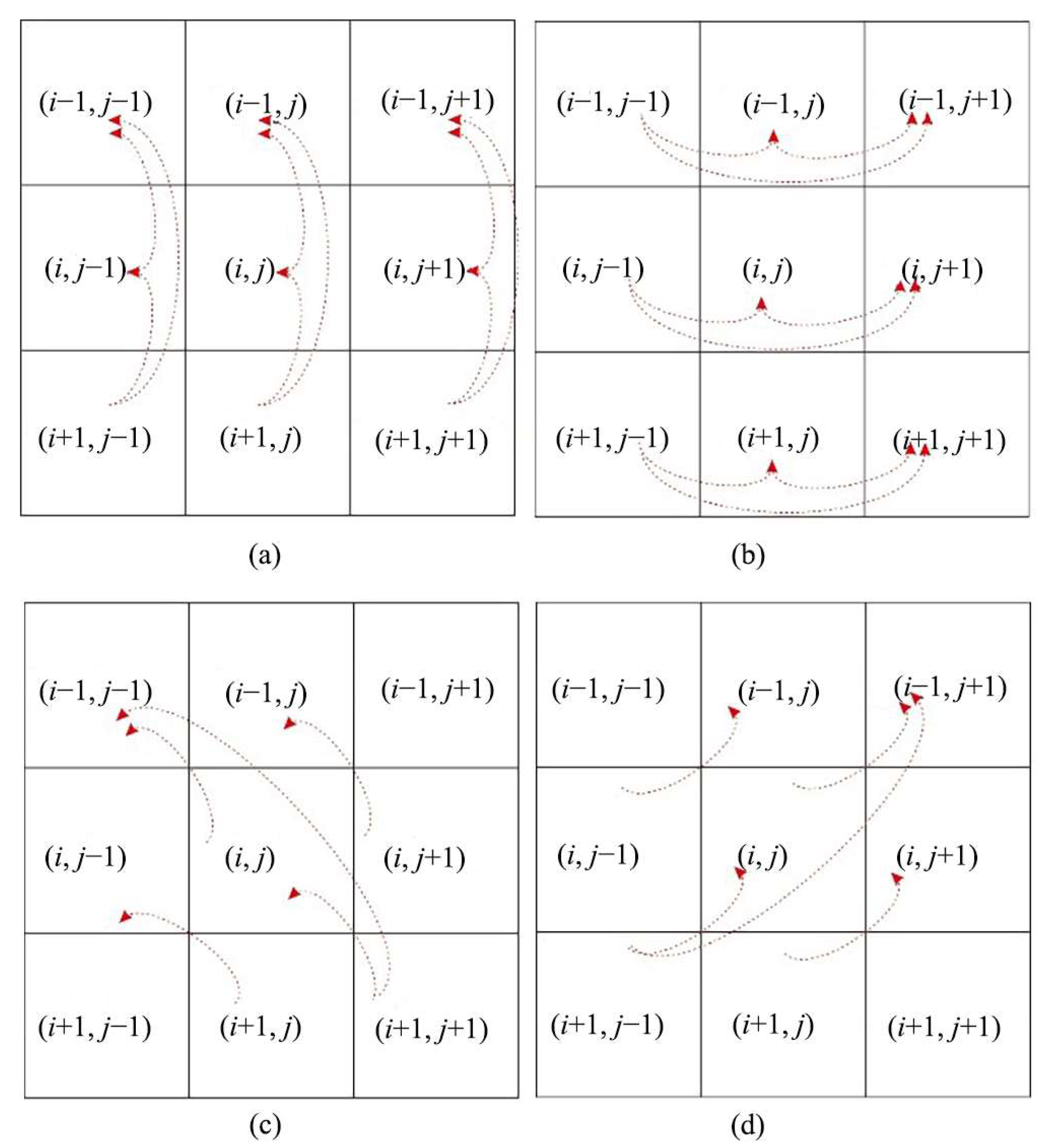
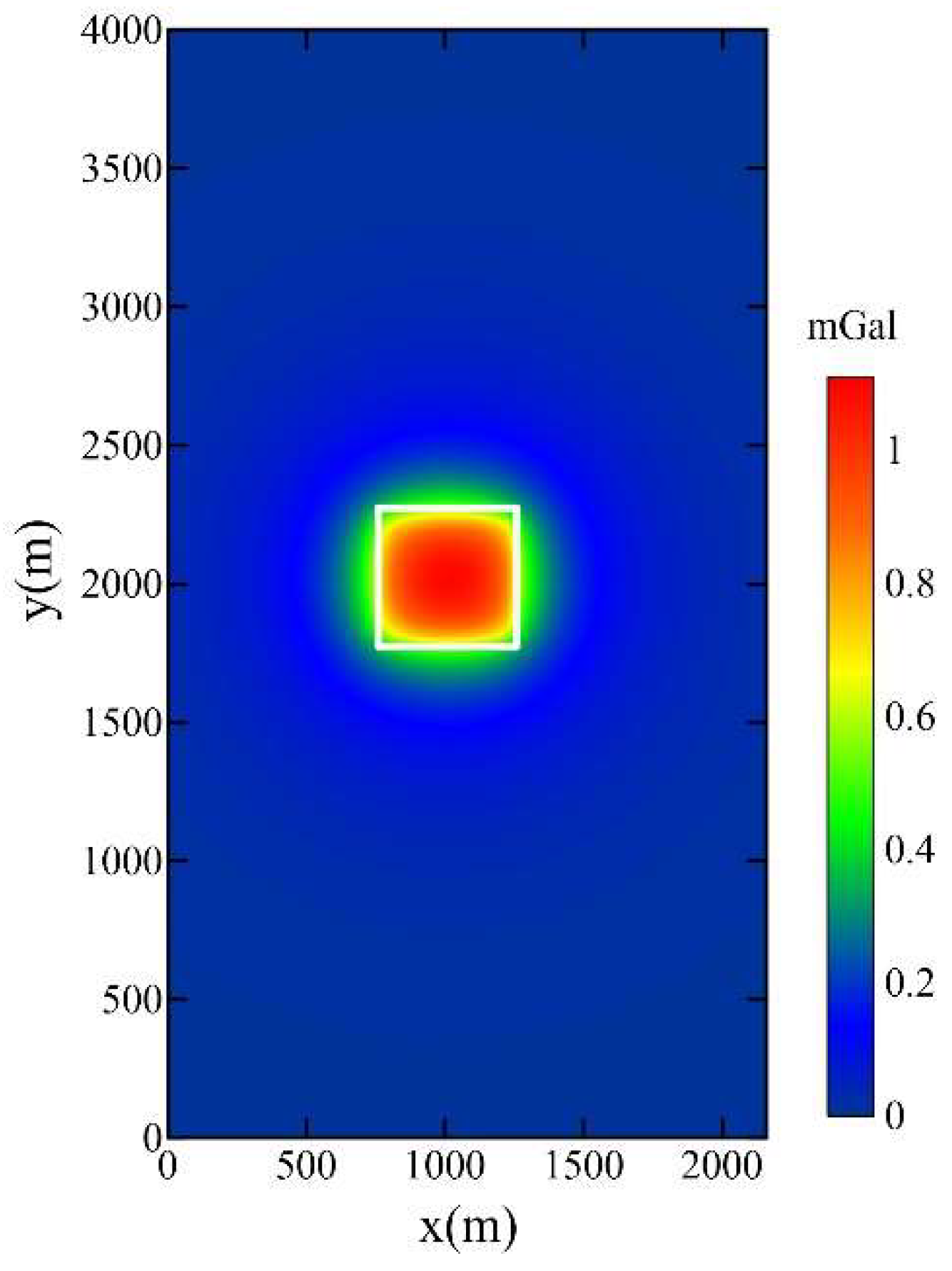
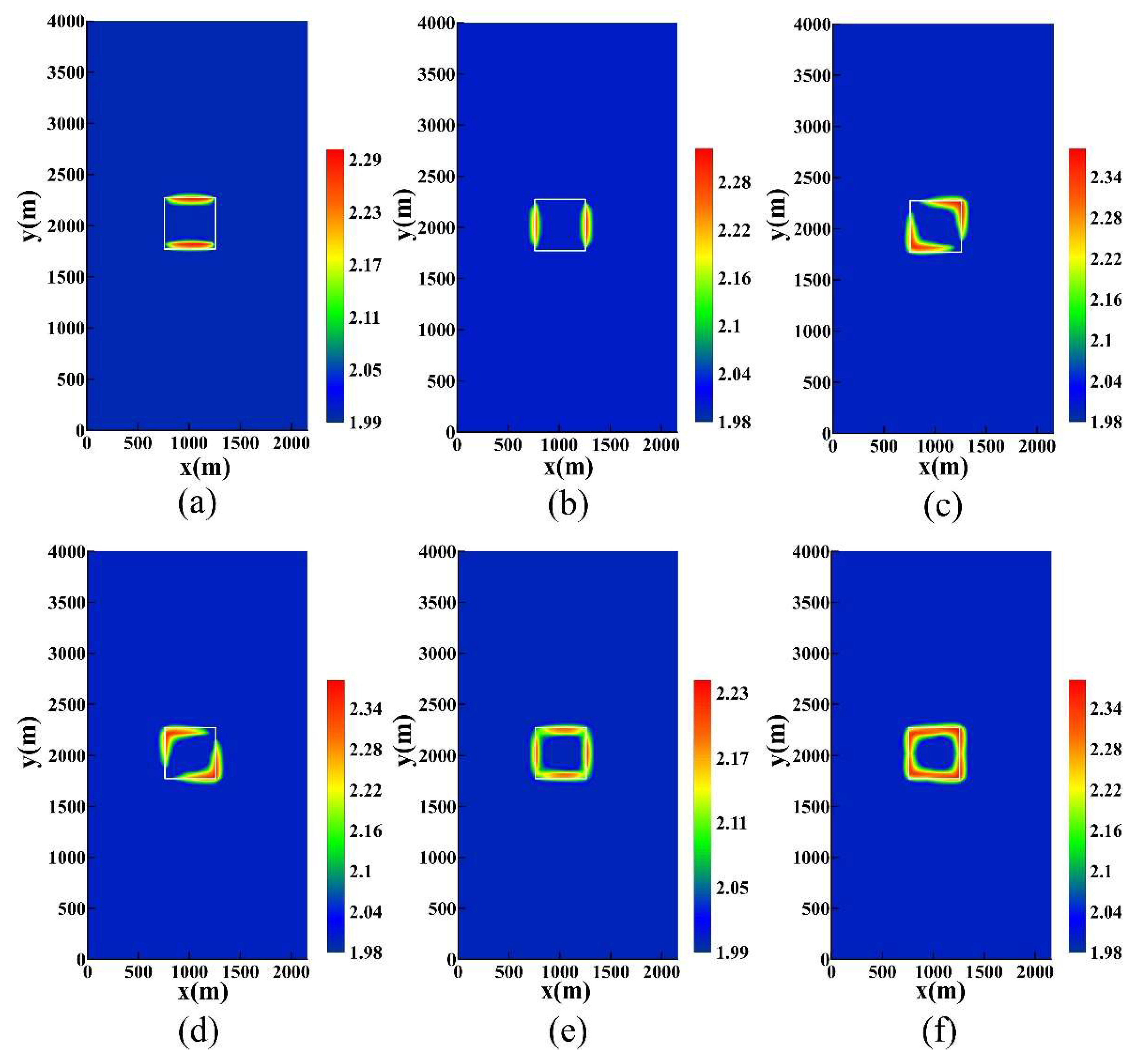

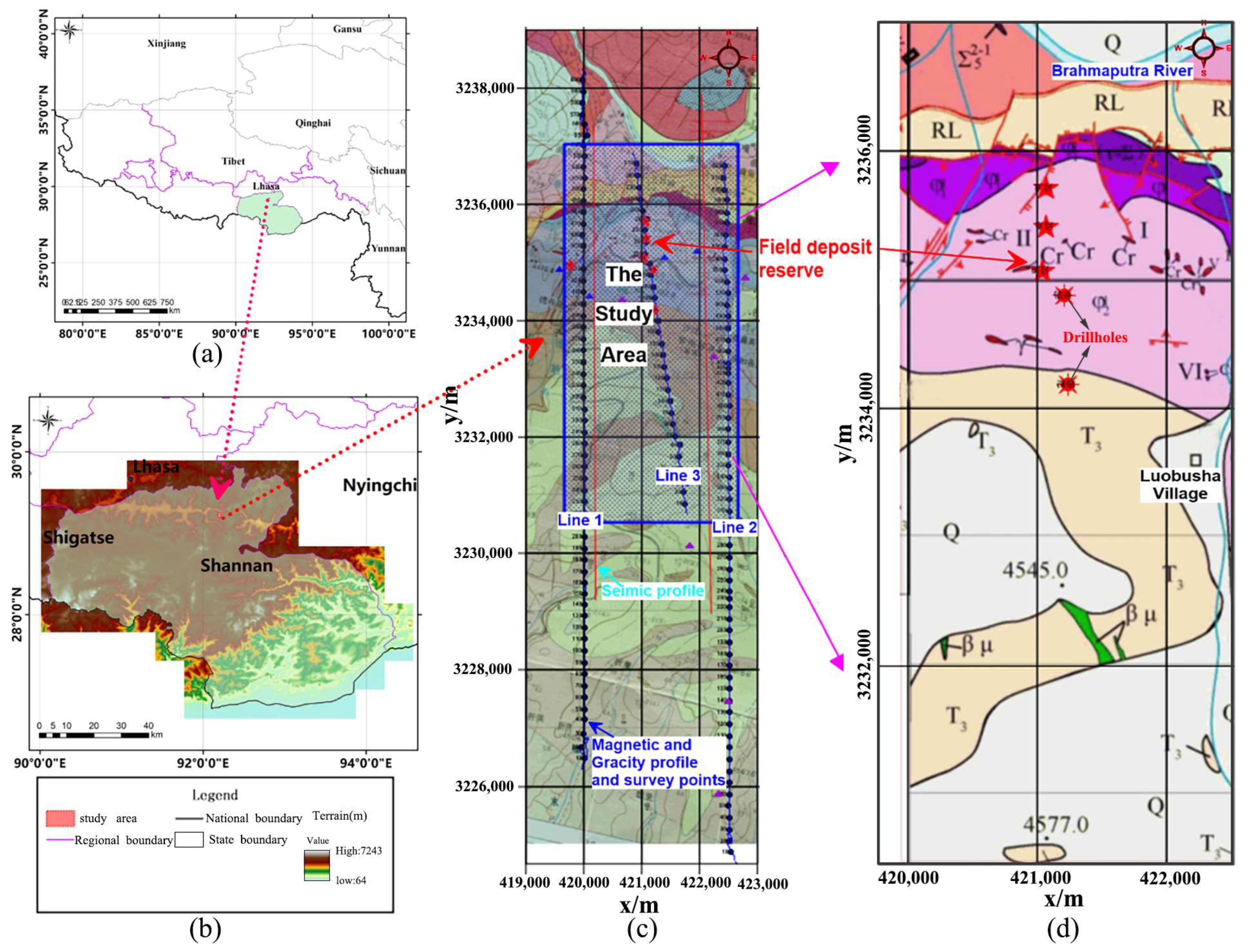


Publisher’s Note: MDPI stays neutral with regard to jurisdictional claims in published maps and institutional affiliations. |
© 2022 by the authors. Licensee MDPI, Basel, Switzerland. This article is an open access article distributed under the terms and conditions of the Creative Commons Attribution (CC BY) license (https://creativecommons.org/licenses/by/4.0/).
Share and Cite
An, B.; Zeng, Z.; Yan, Z.; Zhang, D.; Yu, C.; Zhao, Y.; Du, Y. A Novel Approach to Edge Detection for a Gravity Anomaly Based on Fractal Surface Variance Statistics of Fractal Geometry. Appl. Sci. 2022, 12, 8172. https://doi.org/10.3390/app12168172
An B, Zeng Z, Yan Z, Zhang D, Yu C, Zhao Y, Du Y. A Novel Approach to Edge Detection for a Gravity Anomaly Based on Fractal Surface Variance Statistics of Fractal Geometry. Applied Sciences. 2022; 12(16):8172. https://doi.org/10.3390/app12168172
Chicago/Turabian StyleAn, Baizhou, Zhaofa Zeng, Zhaotao Yan, Dailei Zhang, Chaoyang Yu, Yong Zhao, and Yanan Du. 2022. "A Novel Approach to Edge Detection for a Gravity Anomaly Based on Fractal Surface Variance Statistics of Fractal Geometry" Applied Sciences 12, no. 16: 8172. https://doi.org/10.3390/app12168172
APA StyleAn, B., Zeng, Z., Yan, Z., Zhang, D., Yu, C., Zhao, Y., & Du, Y. (2022). A Novel Approach to Edge Detection for a Gravity Anomaly Based on Fractal Surface Variance Statistics of Fractal Geometry. Applied Sciences, 12(16), 8172. https://doi.org/10.3390/app12168172





